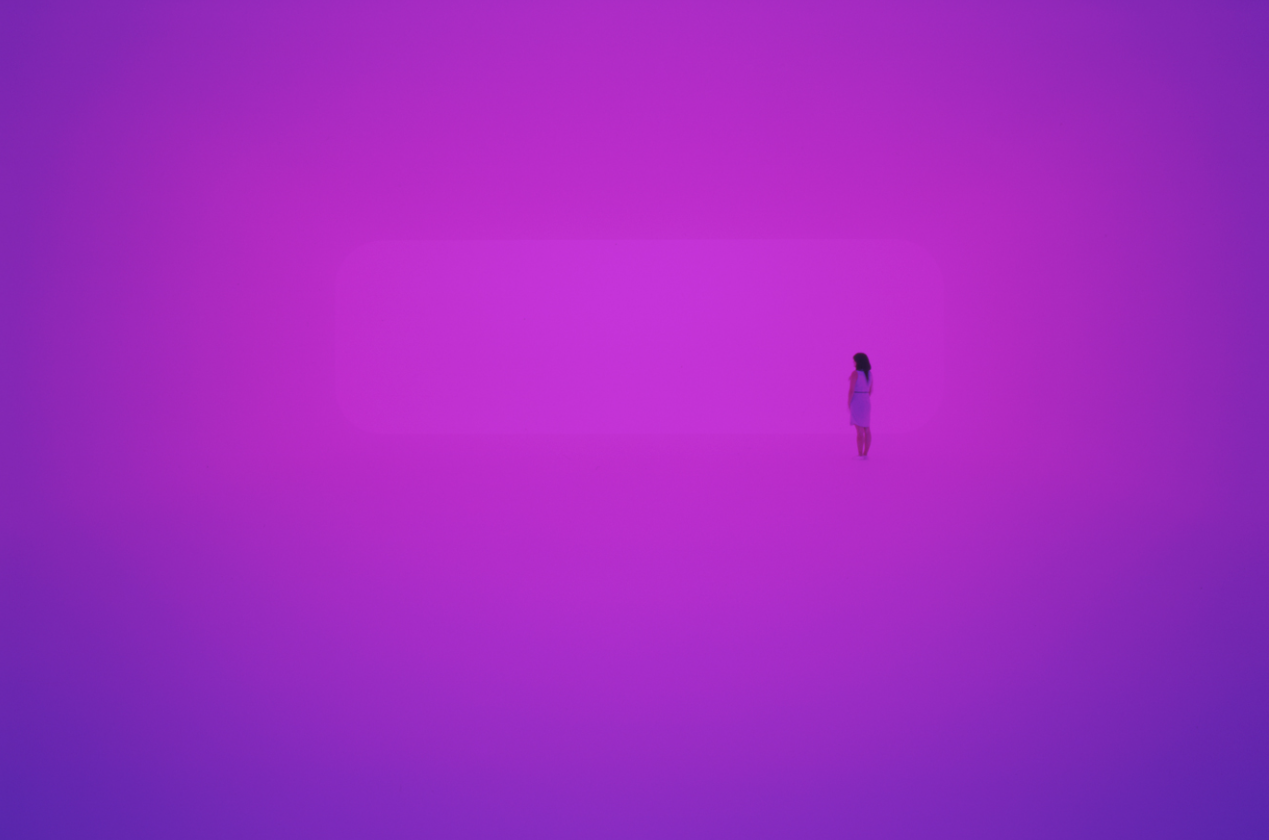Full Colour Immersion: James Turrell’s Use of the Ganzfeld Effect
James Turrell’s artwork explores the bounds of human colour perception. He demonstrates an impressive range with his work, from pieces that bring people together for a shared experience of viewing to those that are deeply personal in their reliance on the neurological processes of the individual to create a truly unique experience. Turrell may be best known for his large works that open gallery spaces to the sky, with his Skyspace works present in museums globally, but his fully immersive works, which utilise the Ganzfeld effect, provide a much more intriguing insight into our understanding of colour and the limits of our senses in perceiving it.
A Ganzfeld installation at LACMA entitled Breathing Light, 2013
Image Credit: wikiart.org
Turrell’s artistic pursuits developed from a scientific focus when he studied perceptual psychology at Pomona College. A prefixation on cognitive psychology and the unconscious mind is evident in Turrell’s work in his experimentation with architectural space, interior gallery space, and colour, especially in works that attempt to reveal to viewers the unconscious processes that allow them to understand their environments. It was at Pomona where Turrell first studied the Ganzfeld effect. The term Ganzfeld, meaning whole field or entire field in German, was defined by psychologist Wolfgang Metzger, who researched visual sensory deprivation and its ability to induce hallucinations. The Ganzfeld effect can be achieved by exposing an individual to a visual environment that eliminates their perception of depth and structural features. In lab settings, specialised spheres are constructed for participants to look into, ensuring that the nose and other facial features do not obstruct the eyes. A common reported experience of participants is the perception of a “dense and vast fog,” or a gradual fading of the presented colour into a neutral grey. The degradation of colour perception in the mind is thought to occur when the brain ceases to register the unchanging visual input. Turell’s Ganzfelds have been installed in various museums at different scales depending on available space and use the Ganzfeld effect to create a seemingly boundless field of colour and merge colours in ways not possible without deliberately blocking the brain’s visual input.
These shared rooms of homogenous colour become infinite expanses of a controlled sensory input. Viewers experience the same finely tuned visual field; the sensory experience is democratised by colour. The senses of all viewers are connected in an objective projection of colour, but the way in which that colour is interpreted and perceived by the viewers can vary widely. Turrell’s Ganzfeld works ignite thought around how the perception of colour is initiated in an observer. In his examination of Turrell’s works, Patrick Beveridge notes that “viewers experiencing the… Ganzfeld Pieces found themselves at times unable to discern whether they were experiencing an eye-based phenomenon, such as a retinally induced color field, or a vision-based phenomenon, such as a homogeneous field of colored light at a distance from their eyes.” Viewers of the works become aware of the limitations of human vision, developing an enhanced awareness that the mind constructs colour, filling in visual gaps to make sense of the environment. Turrell’s use of colour reveals the limits of our understanding of it. Turrell’s immersive colour works can communicate to viewers information about their own bodies and minds. The hallucinatory effects of these works make them a uniquely personal and enlightening experience, using colour as a facilitator to view something within ourselves, to decode our biological processes of vision.
A Ganzfeld perceptual cell entitled Paluka, 1992
Image Credit: sammlung.staedelmuseum.de
The whole-body immersive Ganzfelds installed in galleries today are developed from Turrell’s older pieces that experimented with the creation of a Ganzfeld effect for a single viewer. His Perceptual Cells series includes works that use a multi-sensory Ganzfeld, wherein the visual field is paired with auditory noise to further manipulate the brain’s processing of sensory information. Many of the Perceptual Cells works require the assistance of an attendant to begin a predetermined series of colour movements, but some allow the viewer to turn a set of dials to alter the brightness, hue, and saturation range of the Ganzfeld. These works stand out in the level of autonomy given to the viewer to find particular combinations of variables that allow them to experience the Ganzfeld effect most intensely. The personal nature of the experience is amplified, as the viewer can experience and play with the point at which the brain ceases to perceive the displayed colour or begins to hallucinate the expanse of the Ganzfeld. These works are very close in appearance and operation to the perceptual psychology apparatus used when studying the Ganzfeld effect in a lab setting. The self-controlled devices are separated from lab tools in the ability of viewers to play with colour and their senses based on their desired visual experience.
Turrell’s move toward works that emphasize shared experiences of noticing the minute details of colour provide viewers with greater opportunities to explore with one another the emotional effects of changing colour fields and new visual stimuli in the hallucinatory Ganzfeld spaces. Debates on the nature of colour, if it is a physical characteristic of materials or purely the result of the interpretive processes of the mind, can occur in real time as viewers are immersed in Turrell’s works. Turrell’s careful control of colour lets us explore with one another the bounds of our relationship with it, leading to important contemplation on the self and the processes that can give colour such emotive properties.
Sources
Daly, Scott. “The Ganzfeld as a Canvas for Neurophysiologically Based Artworks.” Leonardo 17, no. 3 (1984): 172–75. https://doi.org/10.2307/1575185.
Cohen, Walter. “Spatial and Textural Characteristics of the Ganzfeld.” The American Journal of Psychology 70, no. 3 (1957): 403–10. https://doi.org/10.2307/1419576.
Beveridge, Patrick. “Color Perception and the Art of James Turrell.” Leonardo 33, no. 4 (2000): 305–13. http://www.jstor.org/stable/1576905.
Cohen, Walter. “Color-Perception in the Chromatic Ganzfeld.” The American Journal of Psychology 71, no. 2 (1958): 390–94. https://doi.org/10.2307/1420084.



